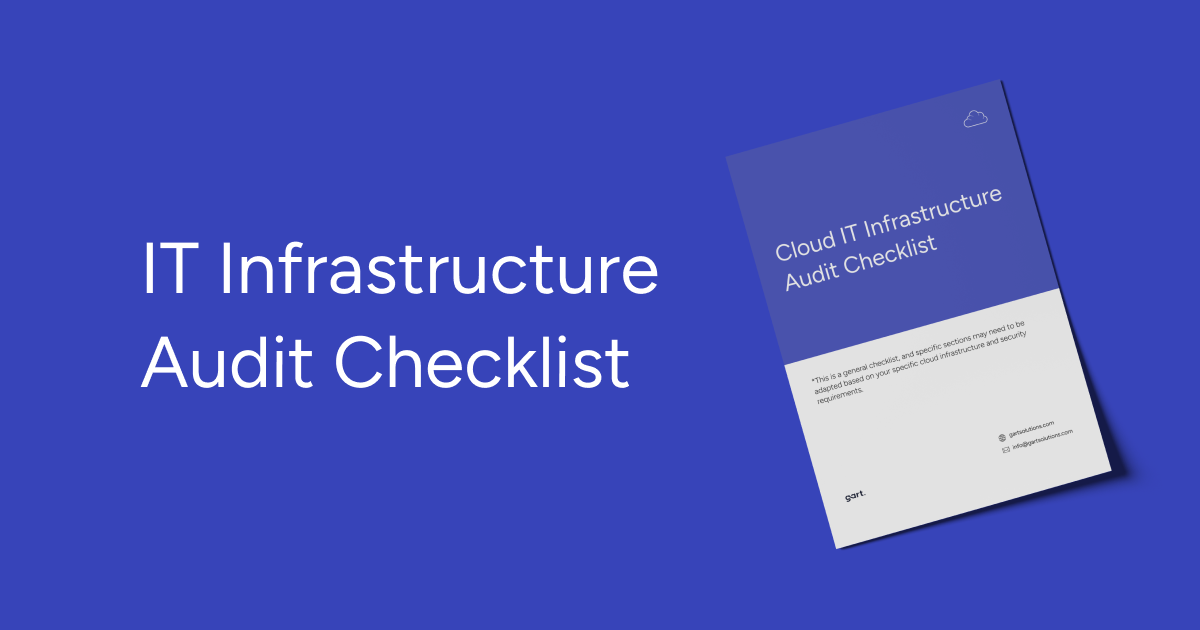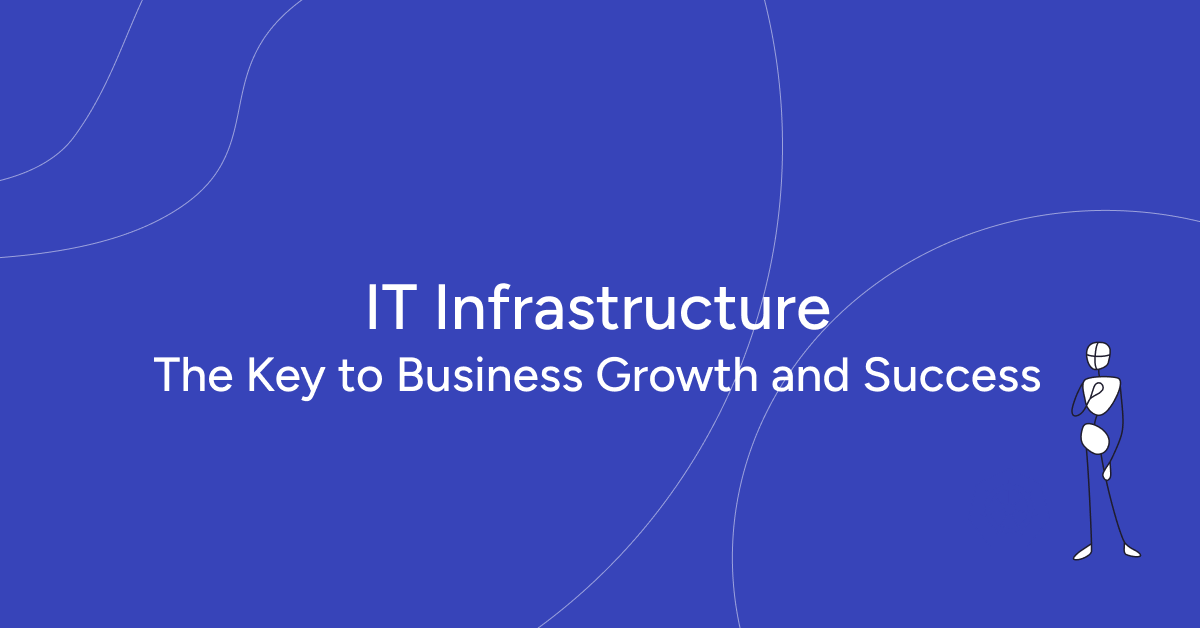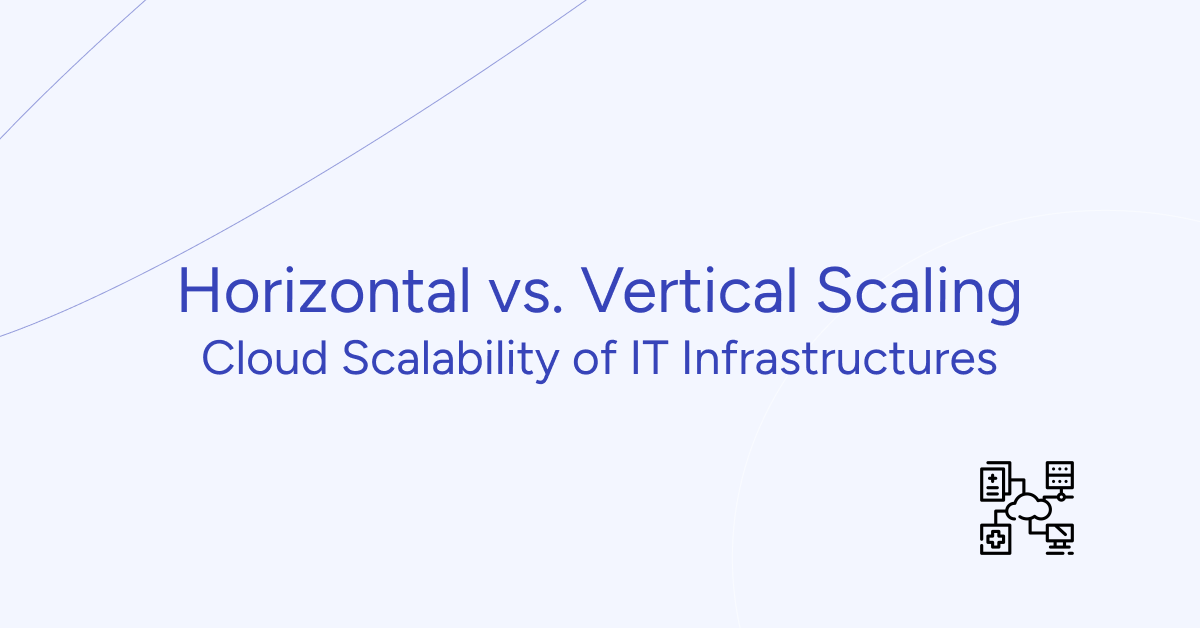The business world feels like it’s on fast forward these days. New tech pops up all the time, and keeping your data safe is getting trickier by the minute. No wonder businesses need to make sure their IT infrastructure is in tip-top shape! An IT infrastructure audit is basically a checkup for your tech systems, making sure they’re ready for whatever comes next.
Key Objectives of an IT Infrastructure Audit
An IT infrastructure audit plays a crucial role in shaping an organization’s technical and business development plans. The technical plan outlines the requirements, goals, architecture, and resources for IT infrastructure development. An audit helps identify the strengths and weaknesses of the current system, define requirements for future development and improvement of IT infrastructure, and plan the necessary resources and budget to accomplish these tasks.
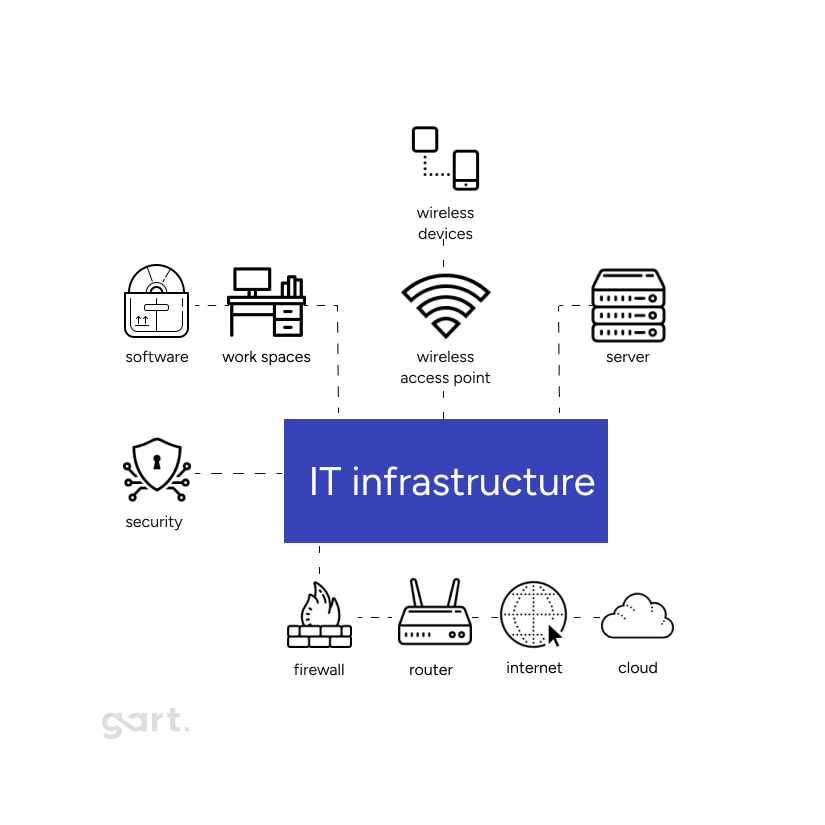
Core Objectives of an IT Infrastructure Audit:
Security Evaluation
An audit enables a comprehensive analysis of security levels, including the assessment of protective measures, data confidentiality, and prevention of potential threats. This is crucial for safeguarding information both within the organization and against external cyberattacks.
Resource Optimization
An audit helps uncover opportunities to optimize IT resources, enhance the performance and efficiency of IT systems, and streamline resource utilization within the organization
Compliance Assessment
An audit facilitates the evaluation of IT infrastructure’s adherence to standards, regulatory documents, and legislation governing information systems. This helps confirm the organization’s compliance with security, data privacy, and data integrity requirements.
Development Planning
The findings of an IT infrastructure audit serve as the foundation for developing an organization’s technical and business development plans. The audit aids in identifying IT system strengths and weaknesses, prioritizing development needs, and planning system changes and upgrades based on concrete results and recommendations.
Technical debt
Technical debt is the accumulation of legacy systems, software, and hardware that can negatively impact the performance, security, and scalability of the IT infrastructure. An IT infrastructure audit can also be used to assess and manage technical debt.
Loss and Disruption Prevention
An audit helps identify potential risks and vulnerabilities in IT infrastructure, enabling proactive measures to mitigate them. Conducting an audit contributes to preventing potential disruptions and issues, and allows for the development of backup, data recovery, and business continuity plans.
When an IT Infrastructure Audit is Essential
Alright, let’s talk about when you’d want to get that IT infrastructure audit done. These audits are crucial for organizations these days – they help make sure your tech is running smoothly and can handle whatever comes your way.
Here are some key times when you’d definitely want to get an audit going:
Implementing new systems and tech
Bringing in new software, hardware, or information systems? Get an audit done first. It’ll help you catch any potential issues or risks before you roll everything out, so you can make sure the new stuff integrates seamlessly and operates safely.
Your business is growing or changing
If your company is expanding, shifting gears, or just generally evolving, an audit can tell you if your IT infrastructure is ready to support those changes. It’ll help you identify any problem areas, optimize your processes, and make sure your tech can keep up with the new business demands.
Beefing up your security
With all the cyberthreats out there these days, evaluating your system security is huge. An audit will show you where your vulnerabilities lie so you can shore up your defenses and protect your critical data and resources.
Streamlining operations
Audits don’t just check for risks and problems – they can also uncover opportunities to optimize your processes and resources. Having that detailed look at how your tech is being used can help you cut costs, boost efficiency, and set the right performance metrics.
So in a nutshell, IT infrastructure audits are essential for organizations dealing with growth, changes, security concerns, or just a need to run a tighter, more cost-effective tech operation. They give you the insights you need to keep your systems performing at their best.
If you skip the audits, problems will just start piling up over time. Here’s what can happen:
Lack of info and unreliable data
No IT audits means limited intel on the current state of your systems. You could end up using outdated or just plain wrong data when making important decisions. That makes planning a real headache and can lead to some seriously misguided strategic calls.
Security risks and vulnerabilities
Without regular audits, your organization is wide open to cyberattacks, data breaches, and other security issues. If you’re not checking for weaknesses on the regular, you’ll have no idea where you’re vulnerable – and that’s a disaster waiting to happen.
Wasted resources
No audits means you could be over or underutilizing your resources, which kills productivity and wastes money on ineffective solutions. That’s a surefire way to lose your competitive edge.
Doing those IT audits lets you get out in front of problems, optimize your resources, lock down your security, and make sure your tech is running like a well-oiled machine. It helps you make smart decisions, minimize risks, and keep up with your current needs.
IT Infrastructure Audit Checklist
Alright, on top of that stuff about the challenges of selecting an IT auditor, we’ve also put together an IT infrastructure audit checklist for you. This is like a handy reference guide to make sure you’ve covered all your bases when getting that audit done.
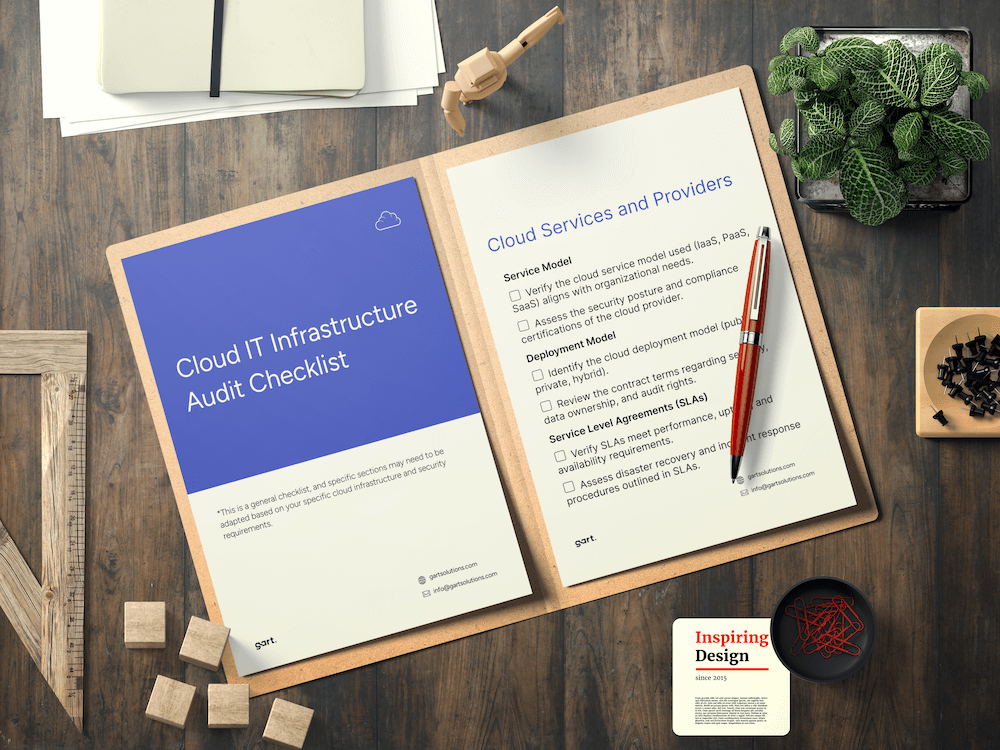
The checklist hits on all the major areas an auditor is gonna want to dig into – things like your cloud infrastructure, virtual environment, data storage, and overall service architecture. We break down the key things that need to be evaluated in each of those domains.
It’s a comprehensive list, but easy to follow along with. Helps ensure the audit is thorough and you’re not missing any critical components of your IT setup. Just go through it step-by-step and you’ll have a clear roadmap for the auditor to follow.
Key Considerations when Vetting IT Infrastructure Auditors
Alright, let’s talk about the common issues and challenges that organizations face when selecting an IT infrastructure auditor:
Auditor Qualifications. One of the main problems is determining the true qualifications and professionalism of the auditor. Customers often have a hard time evaluating the auditor’s actual experience.
Accuracy and Objectivity. Ensuring the auditor will provide an unbiased, objective assessment is crucial. Customers want to be confident the auditor will thoroughly evaluate all aspects of the IT infrastructure without any preconceptions or subjectivity. Finding a reliable, responsible auditor who can guarantee the accuracy and objectivity of their work is a tricky task.
Service Costs. The cost of the auditor’s services is another significant challenge. Customers need to strike the right balance between service quality and price. Comprehensive IT infrastructure audits can be quite expensive, putting them out of reach for some organizations. However, the lowest price isn’t always the best criteria, as rock-bottom costs may signal low-quality work.
Availability and Timelines. Auditor availability and their ability to complete the work on schedule is another problem. Auditors are often booked on other projects or have time constraints, making it hard to find one who can fit the customer’s schedule. Flexibility on timelines is important.
Trust Issues. Trusting the auditor is a core challenge. Customers need to be confident in the auditor’s reliability and their ability to provide an accurate assessment. Checking references, reviews, and credentials can help address this.
Selecting an IT infrastructure auditor is a complex, high-stakes process. Thoroughly researching the auditor’s background, experience, and reputation online can provide valuable insights. For example, at Gart Solutions, we publish client reviews and share details on our completed audit engagements.
How Often Should You Conduct IT Infrastructure Audits?
As a general rule, companies should conduct an IT infrastructure audit at least once a year. However, in some cases, more frequent audits might be necessary. For instance, companies handling sensitive data may require audits every six months or even quarterly.
The results of an IT infrastructure audit should lead to a series of action items, such as:
- Addressing security vulnerabilities: The audit should identify any security weaknesses within the IT infrastructure, and steps should be taken to close those gaps.
- Enhancing performance: The audit should pinpoint areas where IT infrastructure performance can be improved, and actions should be taken to implement those improvements.
- Reducing costs: The audit should identify areas where IT infrastructure costs can be lowered, and actions should be taken to achieve those cost savings.
- Developing a Business Continuity Plan (BCP): A BCP outlines how the company will continue operations in case of an IT outage. The audit should contribute to developing or updating an existing BCP.
A well-conducted IT infrastructure audit can significantly help businesses maintain a secure, performant, and cost-effective IT infrastructure.
The final report’s got the full scoop on any issues or weaknesses they found in the infrastructure. This gives the leadership team a clear, unbiased view of where things are at and what needs to be fixed. Armed with those audit results, they can put together an action plan to boost the efficiency of the tech, optimize the processes, and shore up any vulnerabilities in the system.
The key is using that audit as a roadmap to getting the IT infrastructure operating at peak performance. No more guesswork – just cold, hard data to drive the improvements.
Gart Solutions – Your Trusted DevOps & Cloud Services Provider.
We have extensive experience conducting IT infrastructure audits that deliver the insights organizations need.
Our case studies:
- Infrastructure Optimization and Data Management in Healthcare
- AWS Infrastructure Optimization and CI/CD Transformation for a Crypto Exchange
- New Infrastructure Design and GCP Cost Optimization for Telecom SaaS Application
- AWS Migration & Infrastructure Localization for Sportsbook Platform
See how we can help to overcome your challenges

